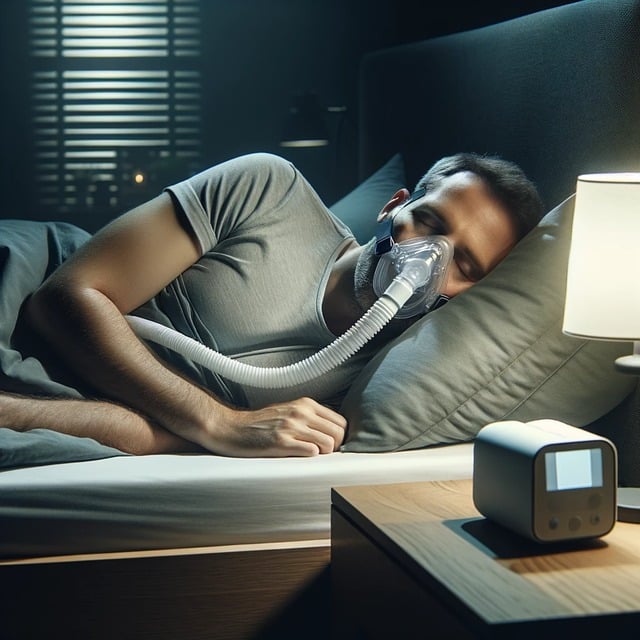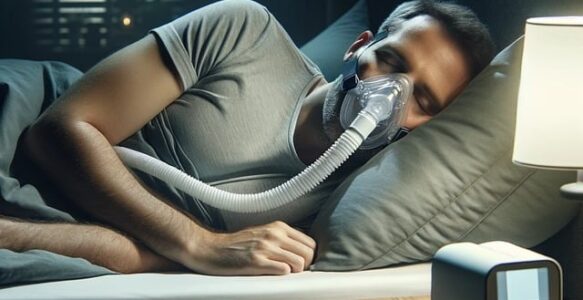
Understanding Apnea Sleep Devices
Sleep apnea is a common sleep disorder that affects millions of people worldwide. It is characterized by pauses in breathing or shallow breaths during sleep, leading to a disrupted sleep cycle and potential health risks. With the growing awareness of this condition, there has been a rise in the use of apnea sleep devices as a treatment option. These devices aim to improve the quality of sleep and reduce the risks associated with sleep apnea.
However, with the multitude of options available in the market, it can be overwhelming and confusing for individuals to choose the right device for their needs. This comprehensive guide aims to provide a thorough understanding of apnea sleep devices, their types, functions, and benefits. Whether you or a loved one has been diagnosed with sleep apnea or you are simply interested in learning more about this condition and its treatments, this guide will serve as a valuable resource to help navigate the world of apnea sleep devices. By the end, readers will have a better understanding of these devices and be able to make an informed decision about which one is best suited for them.
Types of apnea sleep devices
There are several types of apnea sleep devices available to help individuals manage and improve their sleep apnea symptoms. One common type is a continuous positive airway pressure (CPAP) machine, which uses a mask worn over the nose or both the nose and mouth to deliver a steady flow of air pressure, keeping the airway open during sleep. Another choice is a bilevel positive airway pressure (BiPAP) machine, which provides two levels of air pressure – a higher pressure during inhalation and a lower pressure during exhalation to aid with breathing.
For those who find wearing a mask uncomfortable, there are also oral appliances that can be custom-fitted by a dentist to help keep the airway open by repositioning the jaw and tongue. Additionally, there are adaptive servo-ventilation (ASV) devices that check breathing patterns and deliver varying levels of air pressure to match the individual’s breathing needs. It is important to consult with a healthcare professional to figure out the most suitable type of apnea sleep device based on individual needs and preferences.
How do apnea devices work?
Apnea devices function by addressing the underlying problem of obstructed airways during sleep. Continuous positive airway pressure (CPAP) machines work by delivering a constant flow of pressurized air through a mask, which helps to keep the airway open, preventing interruptions in breathing. This steady flow of air acts as a splint, providing support to the airway and preventing it from collapsing. On the other hand, bilevel positive airway pressure (BiPAP) machines offer variable levels of air pressure, adjusting to the individual’s needs during inhalation and exhalation. These devices offer greater flexibility and are often recommended for individuals with specific respiratory conditions.
Oral appliances, created by dentists, work by repositioning the jaw and tongue, thus keeping the airway open. They can be a suitable alternative to masks for those who find them uncomfortable. Adaptive servo-ventilation (ASV) devices monitor the individual’s breathing pattern and deliver customized air pressure to match their breathing needs throughout the night. It is crucial to consult with a healthcare professional to decide the most suitable apnea sleep device for an individual’s specific condition and needs.
Benefits of using apnea devices
Using apnea devices can provide numerous benefits for individuals with sleep apnea or other breathing-related sleep disorders. Firstly, these devices are highly effective in improving the quality of sleep. By ensuring a continuous flow of pressurized air through the airway, devices like CPAP and BiPAP machines help to prevent interruptions in breathing. This allows individuals to experience uninterrupted sleep throughout the night. This leads to increased energy levels, improved mood, and enhanced overall well-being.
Moreover, using apnea devices can significantly reduce the risk of serious health complications associated with untreated sleep apnea. Like high blood pressure, heart disease, and stroke. These devices can help alleviate symptoms like snoring, morning headaches, and excessive daytime sleepiness. Allowing you to wake up feeling refreshed and revitalized. Overall, incorporating apnea devices into a comprehensive treatment plan can greatly enhance sleep quality and promote long-term health and vitality.
Considerations before purchasing a device
When considering buying an apnea sleep device, there are a few important factors to take into account. Firstly, it is crucial to consult with a healthcare professional or sleep specialist who can assess your specific needs and recommend the most suitable device for you. They will consider factors such as the severity of your sleep apnea, your breathing patterns, and any other underlying health conditions. Additionally, it is important to consider the comfort and usability of the device.
Look for features such as adjustable straps, cushioned masks, and quiet operation to ensure a comfortable and undisturbed sleep experience. Furthermore, consider the maintenance and cleaning requirements of the device, as well as the availability of replacement parts and accessories. Finally, it is essential to review the warranty and customer support options provided by the manufacturer. These can greatly contribute to a positive ownership experience. By carefully considering these factors. You can make an informed decision and select an apnea sleep device that best meets your individual needs.
Tips for proper use and maintenance
To ensure proper use and maintenance of your apnea sleep device, it is important to follow a few key tips. Firstly, always read and familiarize yourself with the manufacturer’s instructions and guidelines for use. This will provide you with important information on how to properly assemble, adjust, and operate the device. Additionally, make sure to clean your device regularly according to the manufacturer’s recommendations. This typically involves disassembling the device, cleaning the components with mild soap and water. Allow them to dry thoroughly before reassembly. It is also important to regularly replace disposable parts, such as filters or masks, as directed by the manufacturer.
This will help ensure best performance and prevent the buildup of bacteria or allergens. Finally, it is crucial to address any issues or concerns with your device promptly. If you experience discomfort, air leaks, or any other problems. Contact your healthcare professional or the manufacturer’s customer support for assistance. By following these tips, you can maximize the effectiveness and longevity of your apnea sleep device.
In conclusion, apnea sleep devices can greatly improve the quality of life for those who suffer from sleep apnea. By understanding the different types of devices and how they work. Individuals can make informed decisions about which device is best for them. It is important to consult with a doctor or sleep specialist before buying a device. They can provide personalized recommendations based on an individual’s specific needs. With the right device and proper use, individuals can finally get the good night’s rest they deserve. Remember, a good night’s sleep is crucial for overall health and well-being.


